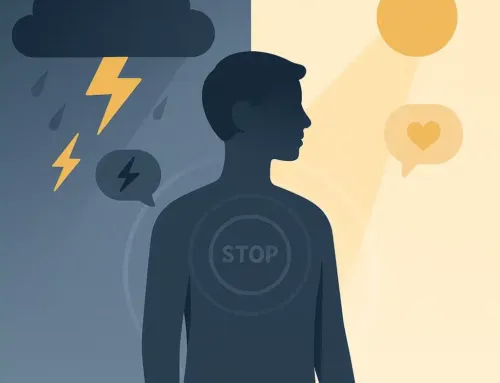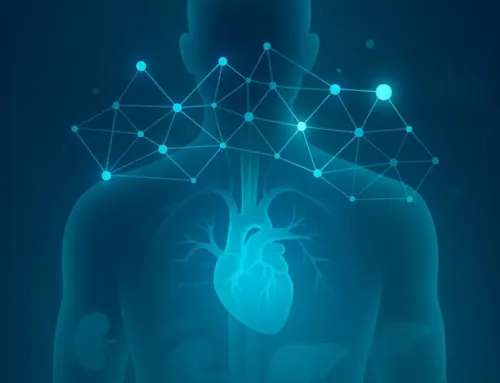
Approx. read time: 6.2 min.
Post: How Weight Lifting and Cardio Workouts Impact the Body at Different Times of the Day
Best Time to Exercise for Hormonal Balance and Fitness Optimization. Exercise plays a crucial role in maintaining overall health, but the timing of workouts can significantly influence their effects on the body. Weightlifting and cardio workouts impact physiological functions differently depending on when they are performed, as they interact with hormonal fluctuations, energy levels, and metabolic processes.
For women, factors such as the menstrual cycle, perimenopause, and menopause further influence how the body responds to exercise at different times of the day. Men also experience hormonal fluctuations, albeit less pronounced than women. Understanding these differences allows for better optimization of workouts to enhance performance, recovery, and overall well-being.
This article explores how weight lifting and cardio workouts affect the body at different times of the day, with a particular focus on hormonal cycles and gender differences.
The Role of Circadian Rhythms in Exercise Performance-Best Time to Exercise for Hormonal Balance and Fitness Optimization
The body’s internal clock, known as the circadian rhythm, regulates numerous biological functions, including metabolism, hormone production, and sleep cycles. Exercise timing can influence these functions, affecting performance, recovery, and hormonal balance.
- Morning Workouts: Beneficial for boosting metabolism, increasing cortisol levels, and enhancing cardiovascular performance.
- Afternoon/Evening Workouts: Ideal for strength training, as hormone levels related to muscle growth (testosterone, growth hormone) peak later in the day.
Morning Workouts: Best for Cardio and Fat Burning
Morning workouts, particularly cardiovascular exercises such as running, cycling, and HIIT (high-intensity interval training), have distinct advantages, particularly in terms of hormone regulation and metabolic benefits.
1. Increased Cortisol and Fat Burning
- Cortisol, the body’s primary stress hormone, naturally peaks in the early morning.
- Engaging in cardio at this time can enhance fat metabolism by utilizing stored fat for energy.
- Fasted cardio (exercising before eating) may further promote fat oxidation, although individual responses vary.
2. Boost in Dopamine and Endorphins
- Cardio in the morning increases dopamine and endorphin levels, leading to improved mood and mental clarity.
- This can enhance focus and productivity for the rest of the day.
3. Regulation of Hormones in Women
- Women in the follicular phase (days 1-14 of the menstrual cycle) have higher energy levels and better endurance, making morning cardio particularly effective.
- During perimenopause, morning cardio can help regulate cortisol and support hormonal balance, reducing symptoms like anxiety and fatigue.
4. Men vs. Women: How Morning Cardio Affects Hormones Differently
- Men have a more stable testosterone cycle, making morning workouts beneficial without major drawbacks.
- Women experience greater hormonal fluctuations, meaning that morning cardio may be more effective during certain phases of the menstrual cycle but could be counterproductive if cortisol levels are already high (e.g., during menopause).
Afternoon & Evening Workouts: Ideal for Strength Training
While cardio is best in the morning, weight lifting is often more effective in the afternoon or evening due to hormonal fluctuations and body temperature.
1. Increased Testosterone and Growth Hormone
- Testosterone and growth hormone levels rise in the late afternoon and evening, optimizing muscle growth and recovery.
- This is particularly beneficial for men, as testosterone plays a critical role in muscle synthesis.
- Women also benefit from evening strength training, particularly during perimenopause and menopause when muscle mass naturally declines.
2. Improved Strength and Performance
- Body temperature is higher in the late afternoon, reducing injury risk and improving flexibility.
- Neuromuscular efficiency is also better, enhancing strength and coordination.
3. Sleep and Recovery Benefits for Women
- Women in perimenopause often experience sleep disturbances due to declining progesterone levels.
- Strength training in the evening can increase serotonin levels, promoting relaxation and better sleep quality.
- Engaging in low-intensity resistance training (such as Pilates or yoga) in the evening can also help lower cortisol levels, further improving sleep.
4. How Evening Weightlifting Affects Men vs. Women
- Men benefit from higher testosterone levels in the evening, leading to better muscle-building outcomes.
- Women may find evening workouts more effective when estrogen levels are lower (e.g., during the luteal phase or menopause), as estrogen can influence recovery and energy levels.
Menstrual Cycle, Perimenopause, and Menopause: Timing Workouts for Optimal Results
A woman’s hormonal fluctuations throughout life play a critical role in how she responds to exercise. Understanding the best workout timing based on menstrual cycle phases and life stages can enhance performance and recovery.
1. Menstrual Cycle Phases and Exercise Timing
- Follicular Phase (Days 1-14):
- Higher estrogen levels promote endurance and energy.
- Best for high-intensity cardio in the morning and strength training in the evening.
- Ovulatory Phase (Days 14-16):
- Peak in strength and power due to higher testosterone.
- Best for heavy lifting in the afternoon or evening.
- Luteal Phase (Days 17-28):
- Progesterone increases, leading to fatigue and lower energy.
- Low-impact workouts like yoga, swimming, or evening strength training are beneficial.
2. Perimenopause and Menopause: Adjusting Workout Timing
- Perimenopause (40s-early 50s):
- Morning cardio can help regulate cortisol and maintain a healthy metabolism.
- Evening weight lifting promotes relaxation and better sleep.
- Menopause (50s and beyond):
- Focus on resistance training to prevent muscle loss.
- Avoid high-intensity workouts late at night, as they can disrupt sleep.
Men vs. Women: How Hormonal Differences Affect Workout Timing
While men and women both benefit from strategically timed workouts, their hormonal profiles create key differences in optimal exercise timing.
1. Testosterone and Growth Hormone in Men
- Testosterone peaks in the morning but remains relatively stable.
- Strength training in the afternoon or evening leads to better muscle-building results.
2. Cortisol Sensitivity in Women
- Women are more sensitive to cortisol spikes, which can negatively impact recovery if workouts are not timed properly.
- High-intensity workouts should be done earlier in the day to prevent cortisol from interfering with sleep.
3. Metabolism and Fat Storage Differences
- Women naturally store more fat for reproductive functions, making morning cardio effective for fat burning.
- Men have a higher muscle mass-to-fat ratio, making strength training more beneficial later in the day.
Practical Recommendations for Workout Timing-Best Time to Exercise for Hormonal Balance and Fitness Optimization
Based on the physiological differences between men and women, as well as daily hormonal fluctuations, here’s an optimal workout schedule:
| Time of Day | Best for Women | Best for Men |
|---|---|---|
| Morning (6-10 AM) | Light to moderate cardio (running, cycling, fasted cardio) | Moderate-intensity cardio (HIIT, endurance training) |
| Afternoon (12-4 PM) | Strength training (lighter weights, higher reps) | Heavy lifting (compound movements) |
| Evening (5-9 PM) | Strength training (heavier weights, fewer reps) for relaxation and muscle growth | Strength training (optimal testosterone levels) |
Conclusion
The timing of workouts significantly influences hormonal balance, energy levels, and overall exercise effectiveness. For women, adjusting exercise routines based on the menstrual cycle, perimenopause, or menopause can optimize results while preventing overtraining and hormonal imbalances. Men, on the other hand, benefit from structured workout timing that aligns with testosterone peaks for strength training.
By aligning workout timing with the body’s natural rhythms, both men and women can maximize their fitness potential, enhance recovery, and improve overall well-being. Whether it’s morning cardio for fat burning and mental clarity or evening strength training for relaxation and muscle growth, understanding when to exercise can make a significant difference in achieving health and fitness goals.
Related Videos:
Related Posts:
The Impact of Cortisol and Dopamine on the Body and Mind: Differences in Males and Females
The Best Times for Cardio and Weight Lifting: A Comprehensive Guide
How Long After We Eat a Meal Should We Exercise and What Exercises Should We Do to Be Healthy
Healthy Habits for Every Worker
Embracing Life’s Cycles: Lessons on Growth, Resilience, and Purpose









